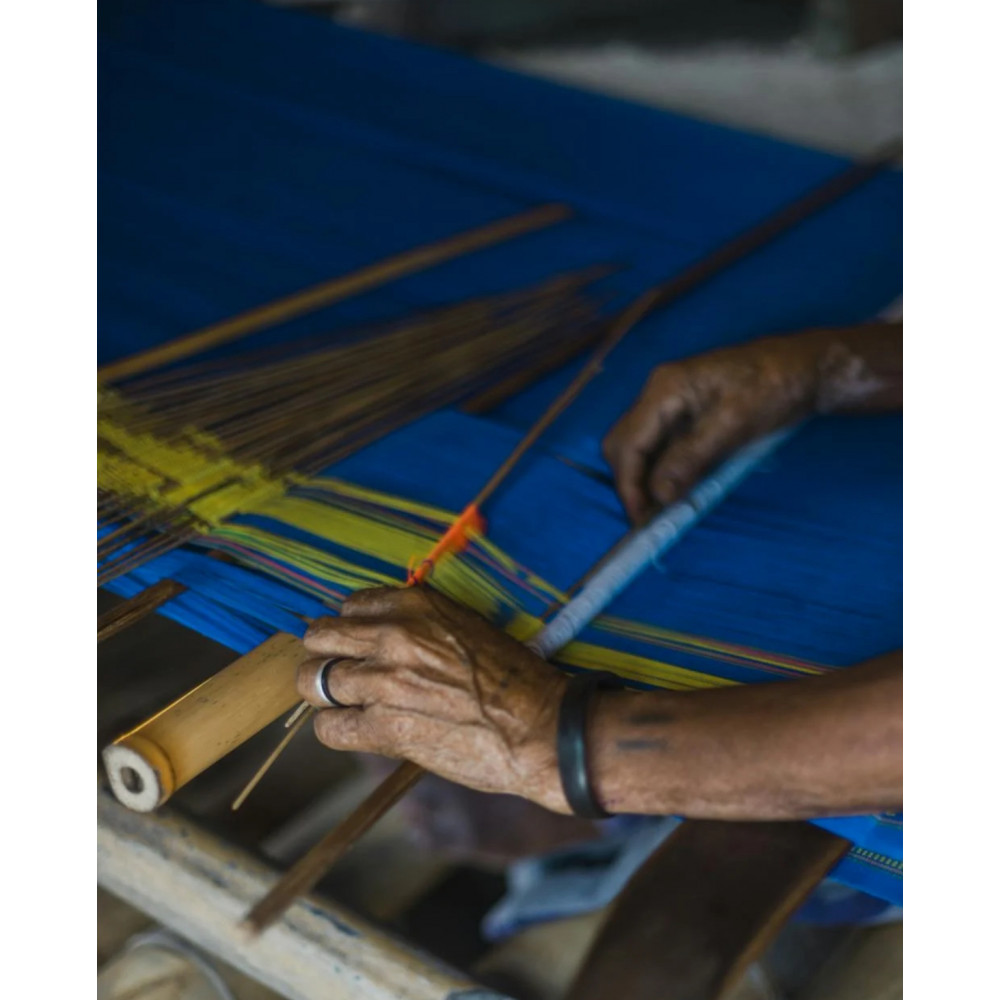Supporting handloom weavers is essential for sustaining rural economies and preserving cultural heritage. This blog examines the socio-economic benefits of handloom weaving, its impact on rural communities, and the importance of preserving this traditional craft.
1. Historical Context of Handloom Weaving
1.1. Evolution of Handloom Weaving Handloom weaving has a rich history, dating back thousands of years. It has been an integral part of many cultures, providing livelihoods and fostering community development. Ancient civilizations, from the Egyptians to the Indians, relied heavily on handloom textiles for both everyday wear and ceremonial purposes.
1.2. Decline and Revival The advent of industrialization and mechanized textile production led to the decline of handloom weaving. However, in recent years, there has been a revival, driven by a growing appreciation for handmade goods and efforts by governments and NGOs to support the craft.
2. Socio-Economic Benefits of Supporting Handloom Weavers
2.1. Employment Generation Handloom weaving provides employment opportunities, particularly in rural areas where job options are limited. This sector is labor-intensive, offering work to a significant number of people, including women and marginalized communities.
2.2. Income Generation and Poverty Alleviation By creating jobs, handloom weaving helps generate income for rural households. This, in turn, contributes to poverty alleviation, as families can secure a stable source of income, improve their living conditions, and invest in education and health.
2.3. Promotion of Entrepreneurship Supporting handloom weavers encourages the growth of small-scale and cottage industries. Weavers often become entrepreneurs, managing their own businesses and contributing to local economic development. This entrepreneurial spirit fosters innovation and self-reliance within communities.
3. Impact on Rural Economies
3.1. Strengthening Local Economies Handloom weaving bolsters local economies by creating a market for raw materials, such as cotton and silk, and finished products. This creates a ripple effect, benefiting other sectors like agriculture and retail, and stimulating economic activity within rural areas.
3.2. Sustainable Development Handloom weaving promotes sustainable practices, as it relies on natural fibers and traditional methods that are environmentally friendly. By supporting this sector, we contribute to sustainable economic development that balances economic growth with ecological preservation.
4. Preservation of Cultural Heritage
4.1. Traditional Craftsmanship Handloom weaving is a repository of traditional craftsmanship and skills passed down through generations. Each region has its own unique techniques and patterns, which reflect the local culture and history. Supporting handloom weavers helps preserve these invaluable cultural assets.
4.2. Cultural Identity and Pride Handloom weaving strengthens cultural identity and community pride. It connects people to their heritage, fostering a sense of belonging and continuity. By wearing and promoting handloom textiles, communities celebrate their cultural uniqueness and traditions.
5. Government and NGO Initiatives
5.1. Policy Support and Incentives Governments around the world have implemented policies and incentives to support handloom weavers. These include subsidies, tax breaks, and grants aimed at sustaining the handloom industry and improving the livelihoods of weavers.
5.2. Training and Skill Development NGOs and government programs offer training and skill development to handloom weavers. These initiatives help weavers improve their techniques, adopt new designs, and enhance their productivity. Continuous learning and innovation are key to keeping the craft alive and competitive.
6. Challenges and the Way Forward
6.1. Market Access and Competition Handloom weavers face challenges in accessing markets and competing with mechanized textile industries. Ensuring fair trade practices, creating cooperative societies, and leveraging e-commerce platforms can help them reach wider markets and secure better prices for their products.
6.2. Technological Integration While preserving traditional methods, integrating appropriate technology can enhance productivity and market reach. Digital platforms for selling products, improved tools, and modern marketing strategies can help handloom weavers thrive in the contemporary market.
Conclusion
Supporting handloom weavers is crucial for the socio-economic upliftment of rural areas and the preservation of cultural heritage. By fostering sustainable development, promoting traditional craftsmanship, and encouraging local entrepreneurship, we can ensure the long-term viability and prosperity of handloom weaving communities. Embracing and supporting this timeless craft not only enriches our cultural tapestry but also strengthens the economic fabric of rural societies.
This blog captures the essence of the economic impact of supporting handloom weavers, highlighting the socio-economic benefits, cultural significance, and future prospects of this traditional craft.



